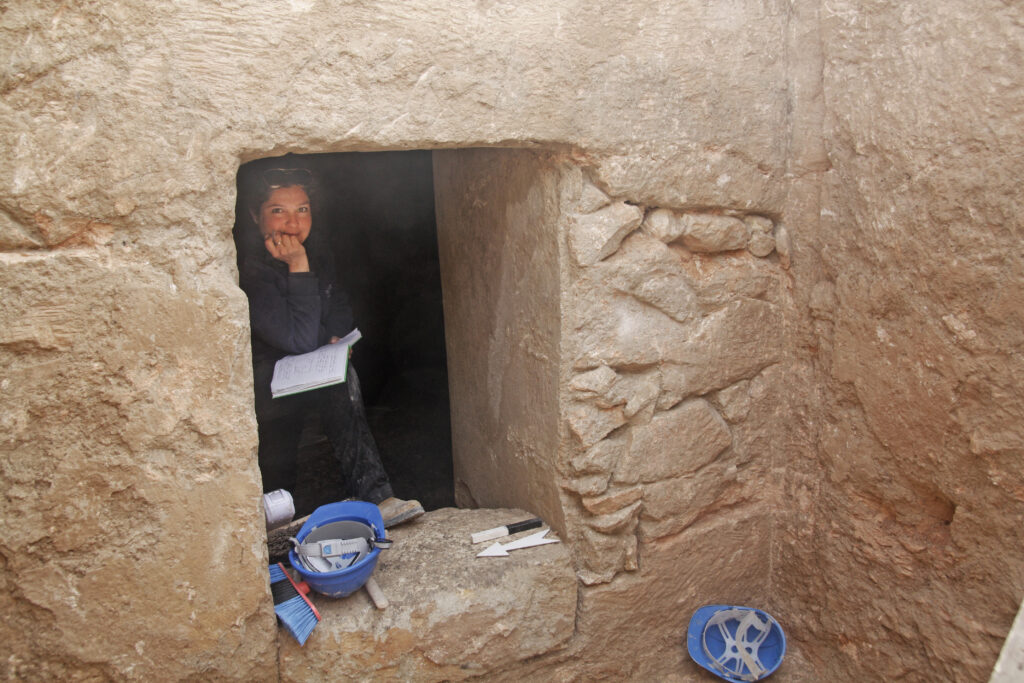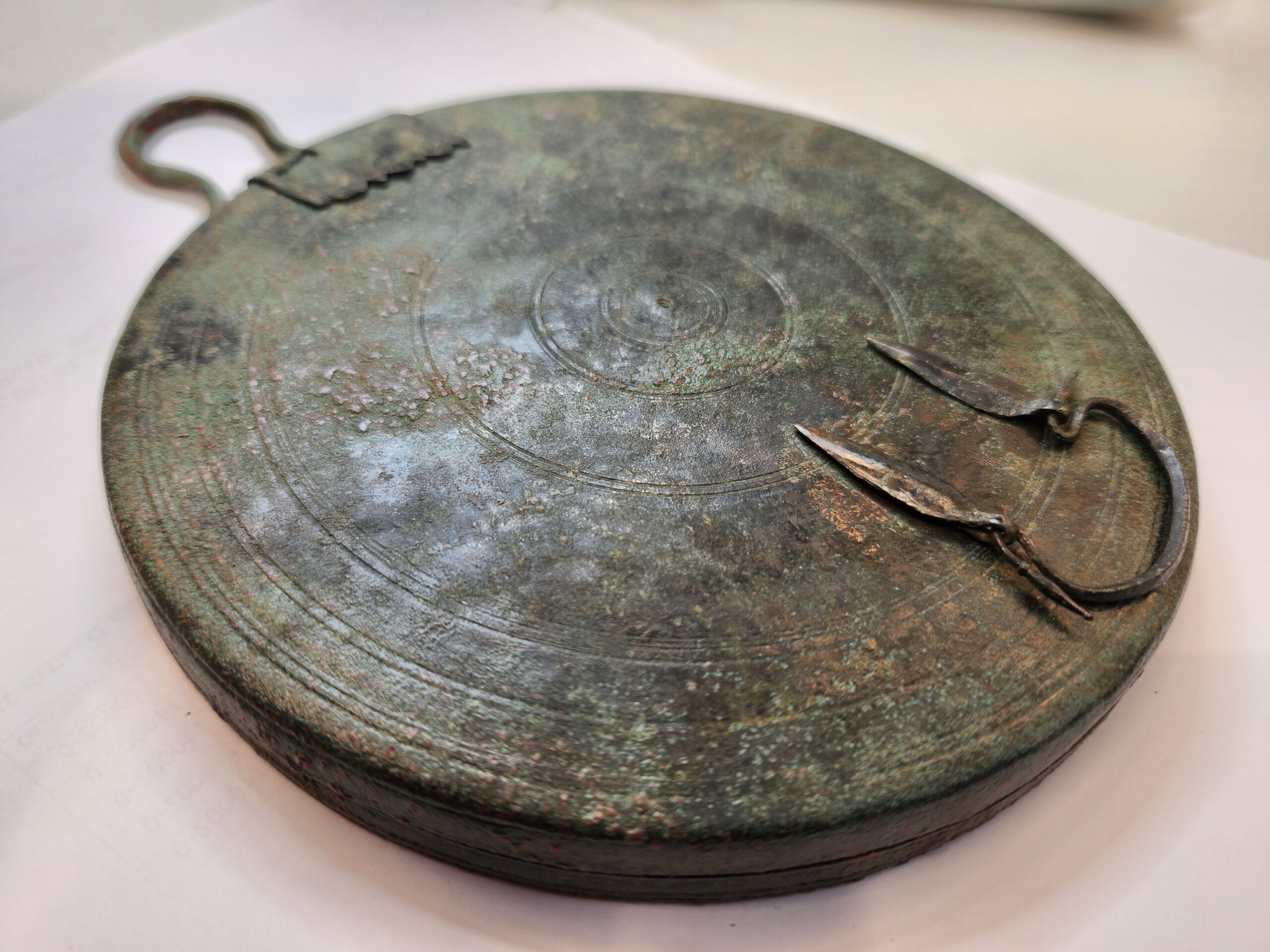Israeli researchers discovered a cave containing the 2,300-year-old remains of a young woman they believe was a courtesan during the Hellenistic period. Along with her remains, they discovered a well-preserved, rare bronze mirror.
On Wednesday, the Israel Antiquities Authority (IAA) announced that the tomb, dating from the 4th or 3rd century BCE, was discovered in a cave on a rocky slope near Kibbutz Ramat Rachel near Hebron Road in southern Jerusalem.
Researchers believe the remains were of a young female courtesan (referred to as a hetaira in Ancient Greek) of Greek origin who was accompanying a high official in the army and the Hellenistic government on his journey through the Land of Israel. The woman had been cremated, a common practice in the Hellenistic world, leaving charred bones.
She was then interred alongside a small bronze box mirror, giving further insight into funerary customs imported to the Land of Israel under the Hellenistic occupation.

The researchers noted that this offering of folding box mirrors was documented in tombs and temples in the Greco-Hellenistic world and clearly indicates a gendered artefact associated with Greek women. The box mirrors, rare and expensive at the time, were usually decorated with engravings or magnificent reliefs of idealized female figures and goddess figures – particularly that of Aphrodite, the goddess of love.
“This is only the second mirror of this type that has been discovered to date in Israel, and in total, only 63 mirrors of this type are known around the Hellenistic world,” says Liat Oz, the director of the excavation on behalf of the Israel Antiquities Authority.” The quality of the production of the mirror is so high that it was preserved in excellent condition, and it looked as if it was made yesterday.”
“Bronze mirrors like the one that was found were considered an expensive luxury item, and they could come into the possession of Greek women in two ways;, as part of their dowry ahead of a wedding or as a gift given by men to their hetairai. As such, the mirrors symbolized, among other things, the connection and the intimate relations between the clients and the hetairai. The hetairai formed part of an Ancient Greek social institution, in the framework of which women – similar to, for example, Japanese geishas – provided social escort services, and not necessarily only, or mainly, sexual services. Some became common-law spouses of the Greco-Hellenistic rulers, high-ranking generals, or famous intellectuals. The hetairai held literary salons and served as muses for the most famous works of sculpture and painting, which were even displayed in temples.
“It is most likely that this is the tomb of a woman of Greek origin who accompanied a senior member of the Hellenistic army or government during Alexander the Great’s campaigns or, more likely, during The Wars of the Diadochi (successors),” the researchers conclude.
Several bent iron nails were found next to the bones.
Regarding the woman’s status, researchers believe that she was probably a companion woman/courtesan (hetaira) rather than a married woman since the latter rarely left their home in Greece and did not join their husbands on military campaigns. The fact that there was no settlement near the burial cave seemingly indicates that this is the tomb of a Greek woman who accompanied senior military personnel or a Hellenistic government official and was buried on the roadside.
The remains were identified by Dr. Yossi Nagar, the Physical Anthropologist of the Israel Antiquities Authority, as the bones of a woman. According to Dr. Guy Stiebel, from the Department of Archeology and the Ancient Near East at Tel Aviv University, “this is, in fact, the earliest evidence in Israel of cremation in the Hellenistic period.”
“The most stimulating question arising from this discovery was – what is the tomb of a Greek woman doing on the highway leading to Jerusalem, far from any site or settlement of the period,” Liat Oz said. “The tomb particularly intrigued us, also because the archaeological information regarding Jerusalem and its surroundings in the early Hellenistic period is very scarce,” stated Dr. Stiebel.
The research will be presented for the first time at the conference New Studies in the Archaeology of Jerusalem and Its Region of the Israeli Antiquities Authority, Tel Aviv University and the Hebrew University to be held on October 11-12 at the conference “New Studies in the Archaeology of Jerusalem and Its Region” conference of the Antiquities Authority, Tel Aviv University, and the Hebrew University. Details concerning the conference may be found on the IAA’s web site.



